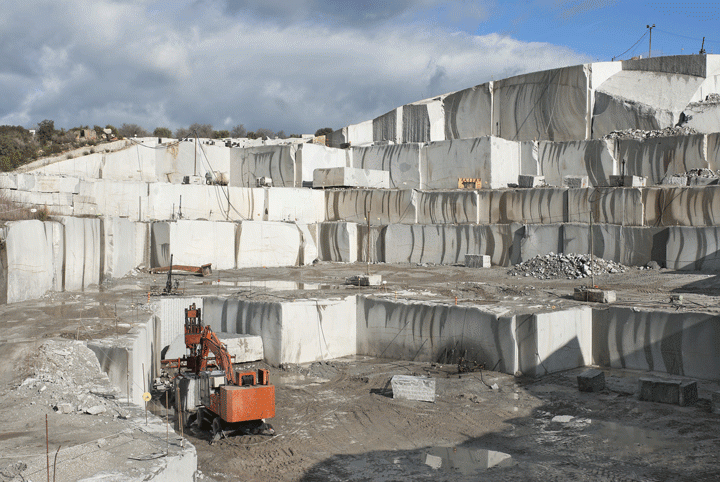Discovering the Rich History and Lasting Practices of Granite Quarrying
As we stand on the precipice of revealing the complex tapestry of granite quarrying, a trip via time discloses not simply the physical act of drawing out stone but additionally the cultural and historical relevance woven into the extremely textile of this technique. From the old origins that laid the foundation for contemporary quarrying strategies to the lasting practices that are shaping the future of this market, each chisel mark on granite surfaces narrates waiting to be discovered (granite quarries in south africa). The legacy of granite quarrying stretches far beyond simple removal; it is a testament to human ingenuity, resilience, and the long-lasting attraction of this stunning stone
Old Origins of Granite Quarrying
Dating back to ancient people, the method of quarrying granite has been an indispensable component of human history and building development. The earliest proof of granite quarrying go back to ancient Egypt, where enormous pyramids and complex sculptures were crafted from this durable rock. The Egyptians made use of primitive devices to extract granite blocks from quarries, showcasing the importance of this material in their significant building and constructions.
Moving on in background, the Greeks likewise made substantial contributions to the quarrying of granite. The Greeks used granite in various architectural marvels, such as holy places and statuaries, demonstrating their ability in shaping and sculpting this durable rock. The Romans further refined the methods of quarrying granite, using sophisticated tools like chisels and hammers to remove and shape granite for their famous frameworks.
Via the centuries, the practice of quarrying granite has actually evolved, with modern-day technologies improving performance while maintaining the classic charm of this natural stone - granite quarries in south africa. From old human beings to modern builders, the heritage of granite quarrying remains to shape our globe
Advancement of Quarrying Methods
The advancement of quarrying methods has been marked by a continual progression towards higher efficiency and accuracy in drawing out granite. Early quarrying methods involved manual labor with standard devices such as chisels, hammers, and wedges to remove granite blocks from the earth.
In even more current times, the arrival of equipment reinvented the quarrying sector, making it possible for faster extraction rates and enhanced performance. Technologies such as ruby wire saws, high-pressure water jets, and pneumatically-driven drills have come to be conventional in modern quarries, enabling for exact cutting and reduced waste. In addition, advancements in computer-controlled tools and 3D modeling have enhanced quarrying procedures, leading to marginal ecological effect and enhanced sustainability practices. As the demand for granite proceeds to increase, the advancement of quarrying techniques remains integral to meeting sector requires efficiently and sustainably.
Cultural Value of Granite
Granite holds an extensive social relevance throughout various human beings as a result of its enduring visibility in building masterpieces and admired monoliths. From the stunning pyramids of Egypt to the elaborate makings of the Angkor Wat temple in Cambodia, granite has been a material of selection for revealing grandeur and long life in cultural heritage. In ancient Rome, granite columns embellished holy places and public structures, representing strength and permanence. The cultural significance of granite extends beyond its physical features; it embodies durability, security, and eternity, making it a symbol of enduring heritages and traditions.

Sustainable Practices in Quarrying
Among the rich background of granite quarrying and its social value exists an expanding emphasis on sustainable techniques within the market. As environmental understanding and concerns regarding resource exhaustion have heightened around the world, the quarrying market has increasingly embraced lasting approaches to reduce its impact on the atmosphere and surrounding neighborhoods.

Moreover, reclamation and rehab of quarry sites post-extraction are essential to sustainable techniques. By bring back quarried locations to a natural or advantageous state, such as creating wild animals habitats or leisure spaces, quarriers can balance out the environmental footprint of their operations and add favorably to the neighborhood community.
Heritage of Granite Quarrying
With a historical backdrop steeped in craftsmanship and industrial progression, what sustaining influence has granite quarrying left on the landscape of modern culture? The legacy of granite quarrying goes beyond mere removal practices; it has actually shaped architectural marvels, city landscapes, and social heritage worldwide. The durable nature of granite has made it a favored choice for monoliths, structures, and infrastructure, my link standing as a testament to the ability and artistry of quarry workers throughout generations.
Additionally, the economic impact of granite quarrying can not be overlooked. The industry proceeds to give employment opportunities and drive neighborhood economic climates in regions where granite removal prevails. It has likewise stimulated technological advancements in quarrying methods and devices, leading to extra effective and lasting techniques.
In regards to sustainability, the legacy of granite quarrying includes initiatives to reduce environmental impacts through improvement projects and responsible resource administration. By balancing financial passions with environmental stewardship, the industry makes every effort to ensure that future generations can remain to gain from this enduring natural deposit.
Final Thought

Comments on “The Hidden Gems: Exploring Granite Quarries in South Africa”